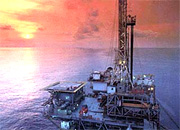Bennex has about 160 employees in Norway (Bergen and Kongsberg), Scotland (Aberdeen) and the US and develops and manufactures subsea equipment mainly for power solutions. The combined revenue of the two companies is approximately EUR75 million. The purchase price is not disclosed. The transaction is subject to the approval of the responsible antitrust authorities.
Subsea Technology Group (STG) backed by the oil and gas specialist private equity investor HitecVision, has over the past three years built a diversified engineering, products and services company within subsea, drilling & well, reservoir and process disciplines. “HitecVision’s core business is to buy, develop and sell quality companies to the right buyer,” says HitecVision Senior Partner and STG board member Pеl M. Reed and adds: “The strong strategic match between Siemens and Poseidon and Bennex will enable quicker realization of the companies’ development plans and the transaction should be very positive for employees, customer and owners.”
“Subsea processing is a fast growing and technologically challenging part of upstream Oil & Gas,” said Tom Blades, CEO of Siemens Oil & Gas Division. “In May 2010, we announced the development of a subsea electrical grid to power seabed processing and production systems including pumps and compressors. With the acquisition of Poseidon and Bennex, Siemens has taken a major step to strengthen its in-house capabilities in marinization, subsea engineering and consulting and assert itself as the leading developer of subsea power grid solutions on the back of its traditional electrical engineering core-competence.” Siemens anticipates that the subsea power grid market will enjoy a double digit growth especially in power grid applications, to become a multi billion market in 2020.
The dilemma of demand growth exacerbated by mature field depletion is forcing oil and gas companies to exploit offshore fields farther out to sea at ever greater water depths. Full-scale subsea processing is a vital component in enabling the commercial viability of these fields that will be brought on stream in the coming years around the globe in places such the Americas and West Africa. One of the main objectives of deep water seabed processing is to counter the enormous hydrostatic pressure, while closing the recovery gap compared to a traditional land based well. Siemens’ subsea power grid can be deployed in water depths of as much as 3,000 meters and is an enabler in closing this gap, opening the way for a more reliable and safer offshore production environment. “The acquisition will add to Siemens’ capabilities, experience and credibility in subsea engineering, equipment marinization, connection and penetration technology, which are the main elements required to integrate our subsea power grid solution,” added Blades.
Bennex is one of the leading suppliers of subsea distribution (hydraulic and electrical) systems, fiber optic, electromagnetic and seismic applications. Poseidon is a subsea engineering and consulting company capable of marinizing existing Siemens equipment and technology to subsea environment, such as subsea control systems, transformers, switchgears, electric motors automation and compressors along with other complementary elements such like cameras and subsea electric valve actuators.
Siemens subsea solution includes transformers, switchgear and variable-speed drives along with other elements, to power and control electric-driven pumps, compressors, and other processing equipment. Siemens is already active in marinization of equipment such as the STC-ECO compressor that completed a comprehensive factory test program in August 2010. This compressor is a central feature of subsea processing. Siemens has accumulated extensive experience in subsea applications such as Siemens Subsea Controller (SSC) operating for Statoilґs Snorre project and the transformers in operation in Petrobrasґ Carapeba oil field off the Brazilian coast.
29 Ноября 2025 | суббота | 15:56


